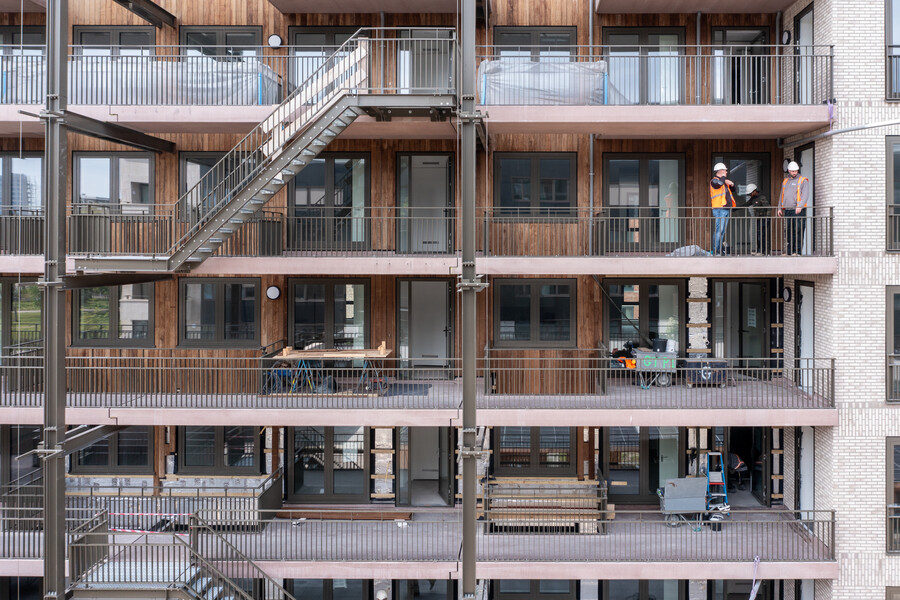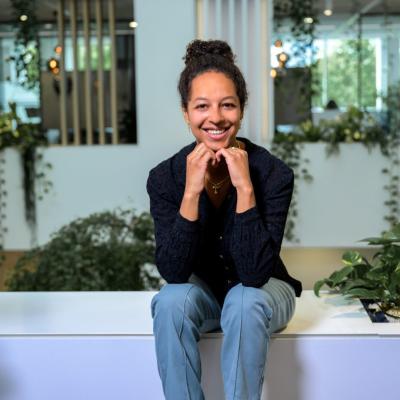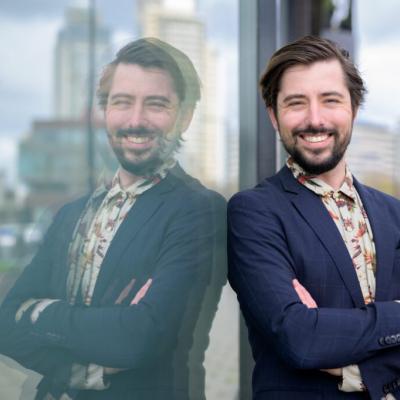The SHARE-North Squared project unites public authorities, shared mobility providers and real estate developers that want to reduce car-dependency in urban developments. As our project is on cruising speed, we decided to interview some partners to learn more about their role, ambitions, and learnings in this project. We have the pleasure to kickstart this series by interviewing Mrs. Malika van de Weerd from the Dutch real estate developer AM. Welcome, Malika!
Malika, can you briefly introduce yourself?
My name is Malika van de Weerd, and I am a program manager for sustainability at AM. We are a real estate developer focused on creating new residential and work environments. We emphasise three impact themes: social impact, climate positivity, and design for well-being. These themes are interconnected. I mainly focus on moving towards climate positivity, which includes the energy transition, circularity, climate adaptation, biodiversity and sustainable mobility.
We frequently work on large-scale developments where mobility plays a crucial role. I closely collaborate with my colleague Maarten Markus, who has long championed sustainable mobility at AM. Other colleagues, such as Maarten Stam and Bob Van Rooijen, are also ambassadors for this topic within our company. Together with this team we now participate in SHARE-North Squared.
How did you get involved in the SN² project?
Maarten was involved in the early stages of SN². The project originated from discussions with the Municipality of Utrecht, which wanted to involve a private partner. Given our extensive experience in urban development across the Netherlands and within the Utrecht region, AM was a natural partner. We regularly collaborate with municipalities, particularly on mobility issues, so we were immediately enthusiastic. Knowledge exchange is always valuable—both sharing our insights and learning from others.
We also found the European scope of the project particularly compelling. While we have worked on many national initiatives, international perspectives bring new insights and best practices.
What do you hope to achieve with this project?
Even before SN², we had already been integrating shared mobility into our projects. We use a hub strategy, ranging from mini-hubs to neighborhood hubs, that serves as a foundation for many of our developments.
Through SN², we want to deepen our understanding of what drives the adoption of shared mobility and how it can be seamlessly integrated into urban development. It provides us with a more comprehensive perspective, allowing us to test and implement new approaches in our projects on different scales and for various target groups.
In Utrecht for instance, we are starting the Brennerbaan project, which is still in the planning phase. We aim to use it as a living lab, integrating shared mobility with public transport to create a complete sustainable mobility package for social housing.
What is your biggest contribution to SN²?
One of the most valuable aspects of SN² is the exchange between municipalities and private developers. These groups have different perspectives, and bringing them together creates better solutions.
At AM, we contribute our expertise from real-world projects. We have worked extensively with shared mobility and understand what works—and what does not—both in terms of practical implementation and strengthening community ties.
As a developer, we also oversee projects from policy discussions to design and execution. We ensure that shared mobility is integrated into urban planning, design, and communication strategies for future residents.
What are you working on right now?
One key project is De Stadsveteraan 020 in Amsterdam, a housing concept aimed at active seniors in social housing. We want to encourage downsizing and shared living, which helps free up larger homes. It is often expected that seniors could be hesitant to move to a new place and share facilities, but this project shows that community-based living can be a real success with this target group!
In this project, we introduced shared mobility without any private parking spots. Instead, we provide electric bikes and three shared cars, all housed within the building. Given that street parking in Amsterdam is very expensive, we want to see how well this model works.
We are monitoring usage data and exploring how to better inform residents about shared mobility options. To do this, close collaboration with shared mobility provider Hely is crucial. This project emphasises community-based shared mobility, where solutions are introduced gradually and adapted over time based on demand.
Another aspect that we are exploring, is the mobility norms. In the Netherlands, urban planning typically starts with car parking norms (autoparkeernorm), but we believe in mobility norms (mobiliteitsnormen), which prioritise sustainable alternatives instead of defaulting to private car ownership. Bremen is an inspiring example, and we are advocating for similar shifts in the Netherlands through substantiated policy discussions with municipalities.

The Stadsveteraan project in Amsterdam.
What are your ‘lessons learned’ so far?
One major insight comes from monitoring mobility usage. In Delft, for example, we introduced a mini-hub with shared cars and bikes. However, data showed that the bikes were not being used (because the Dutchies bought their own private (e-)bike), while demand for shared cars was higher. This led us to adjust our approach: take out the shared bikes and increase the number of shared cars instead.
We have also learned that finding the right balance between incentives and long-term sustainability is challenging. As developers, we often help cover the initial costs of shared mobility services, but making them financially viable in the long run remains a hurdle.
Any final thoughts on the challenges ahead?
A big challenge remains the gap between policy and practice. While cities are starting to embrace sustainable mobility policies, the implementation process is complex. Real estate developers do not have control over public transport availability, for example, which affects how feasible car-free living really is: this is not only about shared mobility, but a total package of walking, cycling, high-quality public transport and shared mobility.
Additionally, urban development projects take time. We are eager to experiment, but aligning all stakeholders—municipalities, housing cooperatives, and mobility providers—requires constant collaboration. Therefore it is sometimes challenging to set-up a living lab environment and start learning.
Despite these challenges, we see great potential in shared mobility as part of sustainable urban development. We are excited to continue learning and applying our findings in future projects!
Thank you Malika for sharing your insights!
Interview by Steffie de Moor (Mpact)
Edits by Jelten Baguet (Mpact)
Picture on top from Brennerbaan-project (copyright: AM)
Want to learn more about how AM is integrating shared mobility into their real estate developments? Check out our webinar in which we discussed the perspective of housing developers regarding shared mobility!


